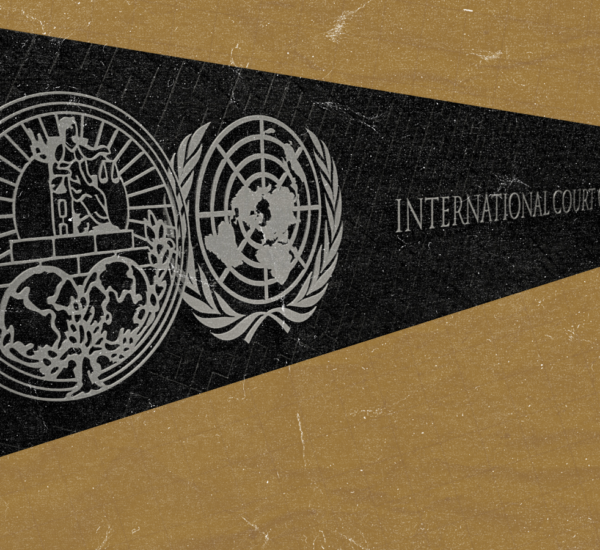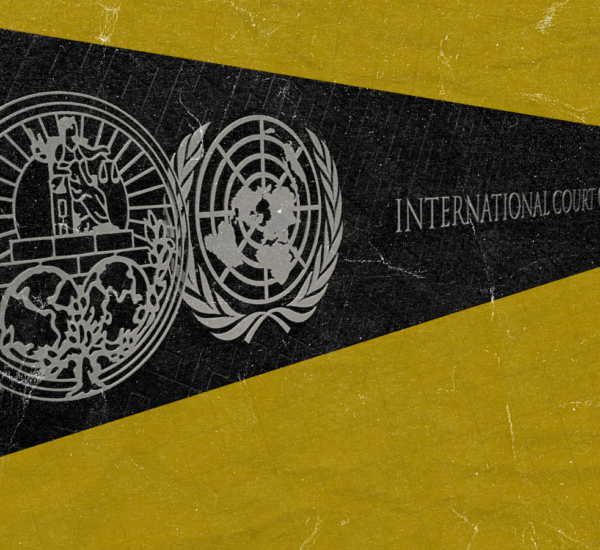
Arnav Mathur
Introduction
The current era is characterised by a technological revolution, pervasively impacting every facet of our lives. It has granted us unfettered access to information and facilitated social connectivity. However, this rapid technological progress has engendered newfound challenges for the legal world, particularly concerning cybercrimes, such as the Non-Consensual Dissemination Of Intimate Images (NCII).
This paper aims to establish a precise and comprehensive definition for the criminal act that accurately depicts the nature and severity of the offense. In doing so, it scrutinizes the use of the term “revenge porn” as an informal definition and highlights its inadequacy. Furthermore, the paper argues for the adoption of the term NCII as the preferred means of defining this crime, while emphasizing the need to draft a specific provision that considers its unique characteristics.
Next, the paper analyses the legal framework of India and compares it with other jurisdictions to understand the diverse approaches adopted to tackle this crime. The digital triad comprising the Right to privacy, Right to be forgotten, and NCII is also examined.
Finally, the paper sheds light on various considerations that must be taken before drafting a specific provision for NCII, emphasising a victim-centric approach.
The primary objective of this paper is to raise awareness and advocate for reform in the criminal justice system to address and tackle NCII, specifically focusing on adults.
Rethinking Revenge Porn: Why the label falls short
Anti ‘revenge porn’ advocates propose replacing the term ‘revenge porn’ with a more intricate terminology. Before advancing this argument, it is crucial to decode the term ‘revenge porn.’
The Illusion of ‘Revenge’
Using the term ‘revenge’ implies that the victim has committed an offence or an act that warrants retribution. However, this assumption is frequently unfounded, as individuals who disseminate intimate imagery may do so for various motives, such as financial gain, voyeuristic tendencies, or the desire to exert dominance. Individuals engage in the NCII to gain power, known as a ‘logic of outing,’ hidden behind the veil of vengeance. Social norms that blame the victim, especially women, create a permissive atmosphere that allows individuals to indulge in ‘outing’ without guilt leading to physical, psychological, and economic harm.
The Inaccuracy of ‘Porn’
The term ‘Porn’ in the nomenclature is misleading and problematic regarding both the true meaning of ‘pornography’ and the crime itself. Employing the term ‘pornography’ in the context of non-consensual creation, distribution, and consumption of intimate imagery can inadvertently implicitly endorse such acts. Furthermore, it could lead to unjustifiable inferences, where all ‘porn’ is categorised as ‘non-consensual,’ thereby tarnishing the reputation of legitimate pornography.
The conflation of private visual material with publicly available content engenders a perilous blurring of the boundary between reality and fiction for viewers. They cannot differentiate between genuine scripted scenes and non-consensual intimate imagery. In addition, viewers are often ignorant of whether the individuals portrayed in the visual material have consented to be recorded and distributed.
Another implication of the ‘Porn’ tag is that it perpetuates the acceptance of its consumption. Mary Anne Franks has noted that society has devolved into a culture of ‘Peeping Toms,’ where individuals can indulge in their most extreme fantasies without regard for the consent of the individuals being watched. Such terminology could endorse the consumption of intimate imagery created and disseminated without consent unlike legitimate consensual pornography, a recognised industry and profession in various parts of the world.
The Lingering Effects Of Language
The consequences of the misnomer and inaccurate labelling extend beyond the theoretical realm, having tangible impacts on the victims of the crime.
The term ‘revenge’ ingrains a punitive mindset in law enforcement authorities, often blaming the victim for allowing themselves to be filmed. The continued use of victim-blaming terminologies in mainstream media has developed public awareness campaigns advising women not to share intimate content altogether, which, in turn, further perpetuates the victim-blaming culture. The mere threat of their intimate images being leaked involves many people curtailing their online activity.
Moreover, by oversimplifying a complex spectrum of harms, the term ‘revenge porn’ has led to the creation of narrow legislation that focuses exclusively on the vengeful motives of the perpetrator rather than the issue of consent.
In essence, the terminology we use has the potential to either obfuscate or elucidate the issue at hand. In this case, the continued use of the term ‘revenge porn’ has led to a limited understanding of the various harm inflicted upon victims, resulting in ineffective legal and social responses. Therefore, it is crucial to adopt a more nuanced terminology that acknowledges the multifaceted nature of this crime and prioritises consent.
Beyond ‘Revenge Porn’: Proposing A More Accurate Term
This article proposes to adopt a different approach to address the semantic inadequacies of ‘revenge porn’ by furthering the lexicon of ‘Non-consensual Dissemination of Intimate Images’ (NCII). For the purpose of this piece, the understanding of NCII is limited to adults only.
This term captures the essence of the crime comprehensively, providing a nuanced understanding of the grave consequences of the crime. The terminology has several salient features distinguishing it from the problematic ‘revenge porn’.
Firstly, the term ‘non-consensual’ is a necessary reminder that the central issue is the lack of consent rather than the content itself. This avoids stigma and victim blaming attached to sharing intimate images
Secondly, the word ‘dissemination’ covers a broader range of activities, such as publishing, transmitting, conveying, or publicly sharing an individual’s intimate image or video without their consent.
Finally, the term ‘intimate images’ is broad enough to encompass various forms of visual material taken in a private/public setting.
Therefore, the adoption of NCII provides a paradigm shift in the legal and social understanding, providing a more accurate and comprehensive way to address the harms experienced by survivors of this crime. This terminology can aid in developing more inclusive and effective laws to prevent, punish, and redress NCII while reducing the stigma and victim-blaming.
Examining The Legal Landscape
Indian Penal Code
Section 292 IPC deals with selling, letting to hire, distributing, publicly exhibiting, or putting into obscene circulation materials; however, this section fails to address the electronic means of dissemination and, more importantly, the violation of privacy and dignity of the victim, which is a crucial aspect of NCII.
Section 354C IPC deals specifically with voyeurism, which includes “private acts” that show a victim’s private body parts. However, it does not explicitly mention publishing, conveying, morphing, or transferring pictures of women, which are integral elements of NCII. Moreover, Section 354C of the IPC is gendered in its application. It limits its scope to male offenders and female victims, similar to Sections 4 and 6 of the Indecent Representation of Women (Prohibition) Act, 1986.
Section 499 IPC defines the act of defamation as a person intending to harm or having a reason to believe the same would harm an individual’s reputation or character. The offence of defamation focuses on the harm caused to an individual’s reputation. However, the harm caused by NCII goes beyond mere reputational harm and includes emotional distress, violation of privacy, and harm to personal and professional relationships.
Section 509 IPC punishes those who insult a woman’s modesty by using words, gestures, objects, or intruding upon her privacy. However, NCII involves the non-consensual creation, distribution, or publication of intimate images, which goes beyond the scope of insults to modesty. Additionally, it is limited to cases involving women as victims, whereas NCII can affect individuals of any gender.
Information Technology Act
Section 66E IT Act penalises transmitting images depicting a person’s private areas, defined as “the naked or undergarment-clad genitals, pubic area, buttocks, or female breast.” Although this provision is gender-neutral and covers aspects of NCII, its narrow definition of “private areas” could limit its applicability in cases where the victim is captured in an intimate position without showing those particular areas.
Section 67A IT Act punishes publishing or transmitting “material containing sexually explicit acts, in electronic form,” which could effectively penalise perpetrators. However, this section could also lead to the possible prosecution of the victim, who may have voluntarily taken the pictures or videos and sent them to their partners, a situation commonly observed in NCII cases. This inherent contradiction in the current legal system when addressing NCII is problematic since the same section the victim relies on to obtain legal relief could be used to prosecute them.
Case Laws
State of West Bengal v. Animesh Boxi is the first case of NCII in India. After their relationship ended, Animesh Boxi was found guilty of distributing intimate images and clips of his ex-partner without her consent. The Court sentenced Boxi to imprisonment and called the victim a ‘rape survivor.’
The case highlighted the need for a victim-centric approach to NCII, similar to that adopted in cases of sexual violence. The ‘rape survivor’ tag for appropriate compensation was not an ideal solution and echoed a call for a more comprehensive legal framework.
Subhranshu Rout v. The State of Odisha involved a refusal to grant bail to the perpetrator of NCII, with the Court making clear its view that permitting such objectionable material to remain on social media without the victim’s consent constituted a direct affront to a woman’s modesty and Right to privacy. Additionally, the Court emphasised the importance of the “Right to be Forgotten” in the context of privacy rights, noting that permanently deleting photos from servers was crucial to protecting these rights.
Therefore, Indian laws contain several provisions that could address specific NCII aspects, but as analysed above the provisions fall short of comprehensively protecting victims from this heinous crime.
The Digital Triad: The Interlinkages Of Right To Privacy, Right To Be Forgotten, And NCII
In KS Puttuswamy v Union of India, the Supreme Court of India affirmed the fundamental Right to privacy, stating that an individual’s Right to control their data is encompassed by the Right to control their own life, including their presence on the internet. This landmark decision laid the groundwork for the recognition of the Right to be Forgotten, as individuals are entitled to privacy and can choose the publicly available information about them. While no formal legislation in India explicitly recognises this Right, the judicial precedent has paved the way for its acceptance.
Notably, the Indian government has recently proposed the Personal Data Protection Bill, which seeks to give citizens greater autonomy over their data. The Bill reflects the principles underlying the EU’s General Data Protection Regulation and aims to establish a framework for protecting personal data, including the Right to be forgotten.
NCII directly relates to the Right to Privacy and the Right to be Forgotten. It violates an individual’s Right to privacy and autonomy, as their intimate images are circulated without consent. The recognition of the Right to Privacy as a fundamental right in India has opened up possibilities for victims of NCII to seek legal recourse and claim compensation for the harm caused.
Global Outlook
In the UK, Section 33 of the Criminal Justice and Courts Act 2015 carries a maximum sentence of two years imprisonment. In Australia, each state and territory has introduced similar laws. Scotland’s Abusive Behaviour and Sexual Harm Act 2016 also criminalises the disclosure or threat of disclosure of such images. The Films and Publications Amendment Act 11 of 2019 in Africa makes revenge porn illegal, with violators facing fines and imprisonment. Israel’s Prevention of Sexual Harassment Act prosecutes offenders as sex offenders and recognises victims as sexual assault victims. The Philippines’ Anti-Photo and Video Voyeurism Act of 2009 punish photo and video voyeurism with imprisonment and fines.
A global wave of legislation has emerged, aiming to tackle the pernicious issue of NCII in various forms. Therefore, it is imperative to establish a precise and distinct definition for NCII in India and to update existing laws to address this problem effectively. This will equip prosecutors with a more precise and cogent legal framework, heightening the probability of securing successful convictions against offenders and ultimately ensuring justice for victims.
Closing The Legal Loophole: Enshrining Protection Against NCII
Factors
Drafting a provision to criminalise the disclosure of NCII requires careful consideration of several factors:
- The provision must explicitly outline the elements of the offence, including knowing disclosure without consent.
- It should not be overly broad or narrow, and exceptions should be included for specific scenarios.
- The law must apply to all individuals, not just current or former partners.
- There should be provisions for removing NCII from online platforms, and appropriate sentencing guidelines should be established.
- In determining the appropriate punishment for NCII, reviewing provisions from various jurisdictions and establishing minimum and maximum sentences and fines is vital. It is crucial to ensure that perpetrators are held accountable while avoiding overly punitive measures that could discourage victims from reporting the crime.
Proposed Provision
The following provision can be included in Chapter XVI of the Indian Penal Code as S.354E, which may be inserted after S.354D (stalking)
- Any person who publishes, transmits, conveys, or publicly shares an intimate image or video, through any mode of communication, of an individual without their consent with the intent to cause harm and with knowledge or belief that such action is likely to cause harm, shall be guilty of the offence of ‘Non-consensual Dissemination of Intimate Images.’
- Upon conviction, the perpetrator shall be subject to imprisonment for a term of not less than one year but may extend up to three years and shall be liable to pay a fine of not less than one lakh rupees and reasonable compensation to the victim and may order the perpetrator to perform community service.
- In addition, the perpetrator must remove offensive content from all digital platforms. The investigating officer shall immediately contact the relevant platform to remove the content upon being informed of the offence by the victim or anyone on their behalf.
- This section does not apply to (1) Images involving voluntary exposure in public or commercial settings; or (2) Disclosures made in the public interest, including but not limited to the reporting of unlawful conduct or the legal and standard practices of law enforcement, criminal reporting, legal proceedings, or medical treatment.
This provision embodies a robust and comprehensive legal framework that aspires to hold accountable those who perpetrate the heinous act of NCII in India. It is tailored to reflect the singular and pernicious nature of this emerging form of cyber harassment and abuse. It endeavours to bestow greater lucidity, deterrence, and succour to the aggrieved. By providing a transparent and definitive recourse to justice, this provision aspires to engender a milieu of dignity, safety, and harmony in the digital realm, thereby paving the way for a more equitable and compassionate society.
Conclusion
In the digital age, upholding justice is crucial, specifically in cases of NCII, where the current legal framework and terminology inadequately address the complexities, ultimately resulting in a lack of justice. Complainants of NCII-related crimes, face various obstacles in navigating the criminal justice system. Thus, it is crucial to establish secure and safe channels for complainants to register complaints and conduct trials that prioritize their privacy and comfort while simultaneously developing accurate terminology and updating Penal codes.
The global outrage that erupted in response to NCII has spurred concrete actions in various countries. India has no reason not to follow suit and can do so more efficiently.
Therefore, the need of the hour is to champion human rights and forge a safer, more equitable digital landscape by addressing the Non-consensual Dissemination of Intimate Images.
Arnav Mathur is a first-year law student at NALSAR University of Law.




